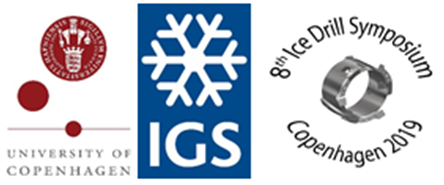Speaker
Description
High production rate ice coring systems allow for fast ice sampling in intermediate depths. Several ice coring operations in Greenland and Antarctica ice sheets and in high altitude glaciers demonstrate ability of the dry hole electromechanical (EM) ice coring drills rich depth of a few hundred meters in a short time. The highest average production drilling rate (aPDR) of 4.79 m/h in 310 m deep borehole (BH) was achieved in Guliya glacier (Tibet, 2015). Depending on drilling conditions decent and acceptable quality ice cores were obtained down to 140-180 m depth. In Guliya BH at least one 0.1-0.3 m long section of the ice core was obtained down to 310 m. The rest of 0.8-1.1 m long samples was presented by irregular shape ice chunks. In polar glaciers below 100-140 m samples mainly composed of 3-10 mm thick disks.
Modification of drilling protocol of the BPRC EM drill allows reduction of surface time for 40%. Then aPDR at 300 m depth will be close to 7 m/h while in 600 m deep BH the aPDR is about 6.5 m/h. Ice sampling with EM coring drill down to 1000 m possible with hoist system modifications, 20 h/day operation in ice temperatures below -40C. The major limitation of the dry hole drilling is rheological BH closure. Estimates shows that at -55C ice temperature depth of 600 m can be reached in 93 h without BH reaming. Sampling down to 1000 m will require 2-3 reaming (total about 8 h) and total 170 h operation.

